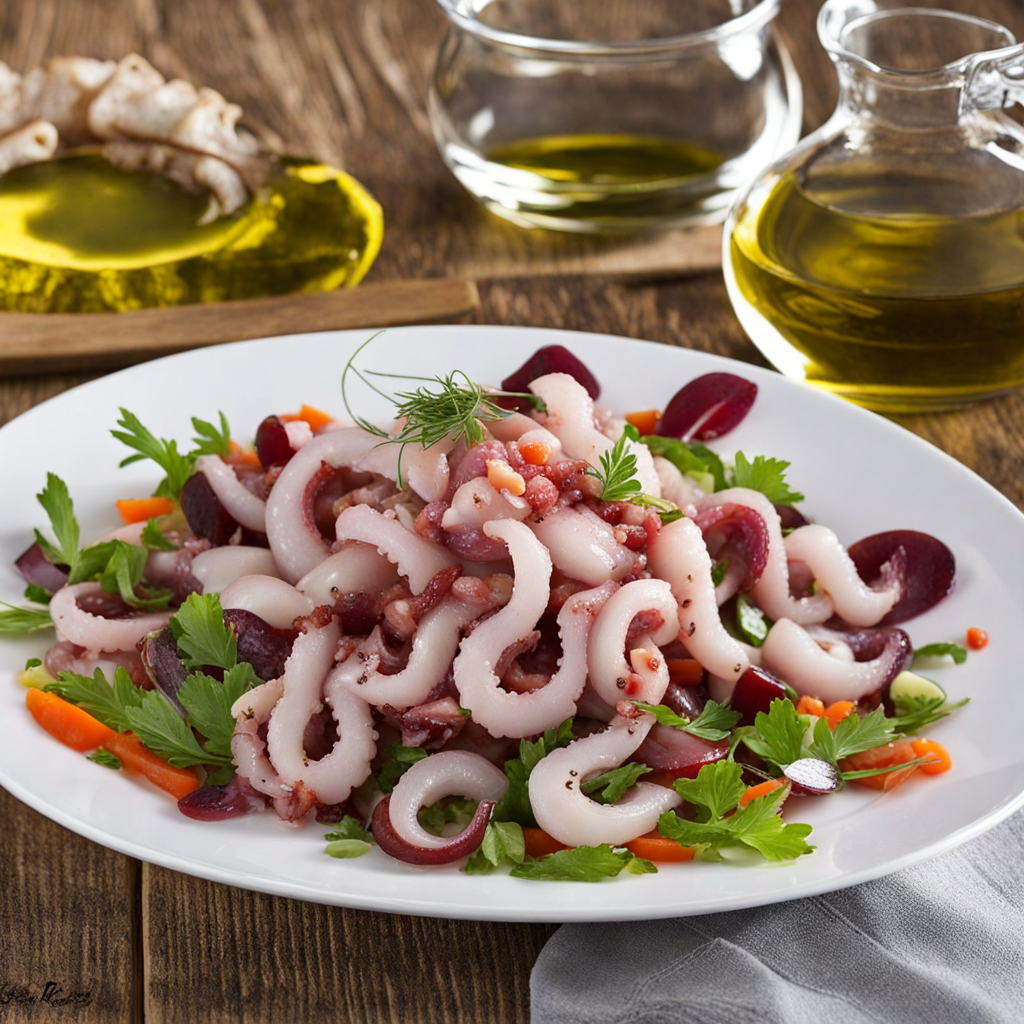Ston Cake
Ston Cake, or "Stonska Pita," is a delightful Croatian pastry that hails from the picturesque town of Ston, located on the Pelješac Peninsula. This traditional dish is known for its unique combination of flavors and textures, making it a must-try for those seeking to explore the culinary landscape of Croatia. The cake typically features a flaky, golden-brown crust that envelopes a rich filling made from fresh cheese, commonly ricotta or a local variant, which imparts a creamy and slightly tangy taste that perfectly balances the sweetness of the pastry. What sets Ston Cake apart is its infusion of local ingredients, particularly the famed Ston salt, which enhances the overall flavor profile. The cake is often delicately seasoned with a hint of lemon zest, lending a refreshing citrus note that cuts through the richness of the cheese filling. Some variations may include a touch of vanilla or a sprinkle of powdered sugar on top, adding an extra layer of sweetness and aroma that complements the savory elements beautifully. This delectable pastry is typically enjoyed warm, making it a comforting treat for both locals and visitors alike. Whether served as a dessert or a snack, Ston Cake captures the essence of Croatian culinary heritage, inviting you to savor its distinct flavors and textures. Its combination of simplicity and richness makes it a perfect representation of the region's commitment to using fresh, high-quality ingredients, ensuring that every bite is a celebration of the local culture and tradition.
How It Became This Dish
Stonska Torta: A Culinary Jewel of Croatia Stonska torta, often referred to as the "Stone Cake," is a delightful confection that hails from the picturesque town of Ston, located on the Pelješac Peninsula in Croatia. This cake, steeped in history and tradition, is not just a dessert; it is a testament to the rich cultural tapestry of the region, showcasing the intersection of local ingredients, culinary practices, and historical influences. Origins: A Culinary Legacy The origins of Stonska torta can be traced back to the late 19th century, although some sources suggest its roots may extend even further into the 18th century. Ston was historically significant as a fortified town, known for its salt production, which was a vital industry in the region. The salt pans of Ston are among the oldest in the world and were a significant economic driver for the area. This necessity for preservation and flavoring of food through salt laid the groundwork for the local gastronomy. The cake itself was created as a way to celebrate important occasions, particularly weddings and religious festivals. It symbolizes abundance and prosperity, as it is often associated with communal gatherings and family celebrations. The Stonska torta is a reflection of the local culture, where food plays a central role in social rituals and community bonding. Ingredients: A Reflection of the Land Stonska torta is distinct for its use of simple yet high-quality ingredients, mirroring the traditional culinary philosophy of the Mediterranean. The primary components include ground almonds, sugar, eggs, and lemon zest, with some variations incorporating local flavors such as orange zest or even a hint of local wine. The cake is characterized by its dense, moist texture and a rich, nutty flavor that comes from the almonds, which have been cultivated in the region for centuries. The connection to the land is essential, as the ingredients are often sourced locally. The almonds, for instance, are grown in the surrounding areas, and the lemons are cultivated in the warm Mediterranean climate. This farm-to-table philosophy not only enhances the flavor of the cake but also reinforces the importance of local agriculture and sustainability. Cultural Significance: More than Just a Cake The Stonska torta is more than a dessert; it is a cultural artifact that represents the identity of Ston and its residents. It is often served during significant life events, including weddings, christenings, and family gatherings, symbolizing joy and celebration. The preparation of the cake is often a communal activity, bringing families together to share recipes and stories, thus preserving the culinary heritage of the region. In addition, the torta is closely linked to the annual “Stonska Torta Festival,” which showcases this beloved pastry alongside other local delicacies. The festival not only celebrates the cake itself but also promotes the rich gastronomic heritage of the Pelješac Peninsula, attracting visitors from across Croatia and beyond. This event has become a crucial platform for local bakers and chefs to demonstrate their skills and creativity, fostering a sense of pride in local traditions. Development Over Time: Tradition Meets Innovation As with many traditional foods, the Stonska torta has evolved over time, adapting to changes in culinary trends and preferences. The classic recipe has seen variations, with modern interpretations incorporating new flavors and techniques. Today, some bakers experiment with the addition of dark chocolate, spices, or even contemporary presentation styles, which have broadened the cake's appeal to a wider audience. Despite these changes, the essence of the Stonska torta remains intact. It continues to be celebrated for its authenticity and connection to the region's history. The balance between tradition and innovation is evident in how local chefs honor the classic recipe while also exploring new culinary horizons. This evolution reflects the broader trends in Croatian cuisine, which increasingly embraces both its rich heritage and modern gastronomic innovations. The Global Stage: Recognition and Appreciation In recent years, the Stonska torta has gained recognition beyond its local roots. As Croatian cuisine has gained popularity on the global stage, the cake has been featured in culinary festivals and international food events, helping to promote Croatian gastronomic culture. Food enthusiasts and chefs alike have begun to appreciate the cake not just as a local specialty but as an essential part of the Mediterranean culinary landscape. The rise of food tourism in Croatia has also played a pivotal role in the cake's exposure. Visitors to the region are often eager to explore local flavors, and the Stonska torta has become a must-try delicacy, often accompanied by a glass of local wine. This has helped to sustain the local economy and encourage the continued production of traditional foods. Conclusion: A Slice of Heritage Stonska torta is a delicious representation of Croatian culture, history, and community spirit. Its journey from a simple cake made for celebrations to a symbol of local pride and culinary innovation illustrates the dynamic nature of food and its ability to connect people across time and space. As it continues to evolve, the Stonska torta remains a cherished part of Ston’s culinary heritage, inviting both locals and visitors to partake in its rich flavors and storied past. In essence, each bite of Stonska torta is a taste of history—a reminder of the land, the people, and the traditions that have shaped it. Whether enjoyed at a wedding, a family gathering, or simply as an afternoon treat, this cake encapsulates the spirit of Ston and serves as a delicious ambassador of Croatian culinary culture.
You may like
Discover local flavors from Croatia







